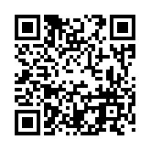日存漢籍所引類書研究──以《太平御覽》為媒介素材
作者:李育娟(國立臺灣師範大學華語文教學系副教授)
卷期:68卷第1期
日期:2023年3月
頁碼:23-43
DOI:https://doi.org/10.6210/JNTNU.202303_68(1).0002
摘要:
類書是古代知識傳播的重要媒介,對東亞漢文學與文化的傳播有相當深遠的影響。類書以門類分別各種古籍史料,並標記出典的編修形式,方便使用者檢索,具有百科全書的功能,同時對古籍的保存有著極高的貢獻。傳日類書中,以《修文殿御覽》、《藝文類聚》、《太平御覽》三部書的影響最為深遠。北宋初年編修之《太平御覽》其藍本為北齊的《修文殿御覽》,而《修文殿御覽》之藍本為南朝梁的《華林遍略》,《修文殿御覽》及《華林遍略》皆已散失,其詞條的輯佚常透過《太平御覽》來進行比對。
本研究擬以《太平御覽》為主要媒介素材,調查並蒐集《令集解》、《政事要略》和《典言》書中《修文殿御覽》或《華林遍略》的佚文。經調查後可知,《令集解》、《政事要略》、《典言》使用了源自《華林遍略》直系藍本的諸類書,而《政事要略》除了三處標記《修文殿御覽》的詞條外,仍有使用《修文殿御覽》或《華林遍略》的情形存在,但因間接引用的緣故,有許多詞條未標記來源的類書被忽略。因此,透過本研究的考察,可彙整出相關類書詞條的引用概況,對至今《華林遍略》、《修文殿御覽》的輯佚以及影響層面的研究帶來新一步的進展。
關鍵詞:太平御覽、令集解、典言、政事要略、類書
 《詳全文》
《詳全文》

參考文獻:
- 西漢‧司馬遷,《史記》,第二版,北京市:中華書局,1982。
- 南朝宋‧范曄,《後漢書》,北京市:中華書局,1965。
- 南朝梁‧蕭繹,《金樓子》,收入《知不足齋叢書》,第19冊,臺北市:藝文印書館,1966。
- 唐‧房玄齡,《晉書》,北京市:中華書局,1997。
- 唐‧徐堅,《初學記》,北京市:中華書局,1962。
» 展開更多
- 西漢‧司馬遷,《史記》,第二版,北京市:中華書局,1982。
- 南朝宋‧范曄,《後漢書》,北京市:中華書局,1965。
- 南朝梁‧蕭繹,《金樓子》,收入《知不足齋叢書》,第19冊,臺北市:藝文印書館,1966。
- 唐‧房玄齡,《晉書》,北京市:中華書局,1997。
- 唐‧徐堅,《初學記》,北京市:中華書局,1962。
- 唐‧道世,《法苑珠林》,收入《大正新脩大藏經》,普及版,第53冊,東京都:大正新脩大藏經刊行會,1991。
- 唐‧虞世南,《北堂書鈔》,收入《景印文淵閣四庫全書》,第889冊,臺北市:臺灣商務印書館,1983。
- 唐‧歐陽詢,《藝文類聚》,新二版,上海市:上海古籍出版社,1999。
- 宋‧李昉,《太平御覽》,上海市:上海古籍出版社,2008。
- 小島憲之,《上代日本文学と中国文学:出典論を中心とする比較文学的考察》,上卷,東京都:塙書房,1962。https://doi.org/10.11501/1346421。
- 小島憲之,〈平安朝述作物の或る場合—「類書」の利用をめぐって〉,《人文研究》,21卷6號(1970),頁441-463。ttps://doi.org/10.24544/ocu.20180423-027。
- 井上順理,〈《令集解》引《玉篇》佚文考—「孟子伝来考」附論〉,《鳥取大学教育学部研究報告(人文‧社会科学)》,17號(1966),頁77-124。
- 水口幹記,〈延喜治部省式祥瑞条における《修文殿御覧》の利用について—延喜治部省式祥瑞条の構成(二)〉,《延喜式研究》,15號(1998),頁55-79。
- 太田次男,〈《政事要略》所引の白氏文集について〉,《史学》,45卷4號(1973),頁1-42。
- 田中幹子,〈《修文殿御覧》佚文について〉,《甲南国文》,38號(1991),頁95-98。
- 池田昌広,〈《三教勘注抄》と類書〉,《京都産業大学論集(人文科学系列)》,54號(2021),頁331-352。
- 池田昌広,〈《日本書紀》の潤色に利用された類書〉,《日本歴史》,723號(2008),頁1-16。
- 池田昌広,〈雄略紀5年「葛城山の猟」の出典〉,《京都産業大学論集(人文科学系列)》,48號(2015),頁177-191。
- 西宮一民,〈令集解と玉篇〉,《萬葉》,70號(1969),頁41-55。
- 杤尾武,〈日本に伝来した類書とその効用〉,載於《和漢比較文学の周辺》,頁57-80,東京都:汲古書院,1994。
- 李昕晧,〈論日本漢文史料著作對中國古字書的輯佚功能及漢語史研究價值—以《政事要略》引原本《玉篇》為例〉,《語学教育研究論叢》,36號(2019),頁87-102。
- 尾崎康,〈弘決外典鈔引書考並索引〉,《斯道文庫論集》,3輯(1964),頁299-328。
- 佐藤義寛,《三教指歸注集の研究》,京都府:大谷大學,1992。
- 周生傑,〈論《太平御覽》對前代類書的利用〉,《古典文獻研究》,10輯(2007),頁312-332。
- 京都大学令集解研究会,〈《令集解》に於ける《玉篇》利用の実態〉,《鷹陵史学》,3-4號(1977),頁195-242。
- 東野治之,〈《典言》の成立と日本古代におけるその受容—附,本邦古文献所引《典言》佚文〉,《大阪大学教養部研究集録(人文‧社会科学)》,34號(1986),頁27-36。
- 胡道靜,《中國古代的類書》,新一版,北京市:中華書局,2005。
- 桂羅敏,〈《華林遍略》考辨〉,《新世紀圖書館》,3期(2013),頁69,78-80。https://doi.org/10.16810/j.cnki.1672-514x.2013.03.023。
- 髙田宗平,〈《令集解》所引《論語義疏》の性格に関する諸問題—「五常」の条をめぐって〉,《総研大文化科学研究》,3號(2007),頁11-41。
- 髙田宗平,〈《政事要略》所引《論語義疏》の性格について〉,《国立歴史民俗博物館研究報告》,145集(2008),頁349-372。https://doi.org/10.15024/00001620。
- 惟宗允亮,《政事要略》,收入《新訂增補國史大系》,第28冊,東京都:吉川弘文館,1964。
- 惟宗直本,《令集解》,前篇,收入《新訂增補國史大系》,第23冊,東京都:吉川弘文館,1966。
- 彭邦炯,《百川匯海—古代類書與叢書》,臺北市:萬卷樓,2001。
- 勝村哲也,〈修文殿御覧天部の復元〉,載於山田慶兒(編),《中国の科学と科学者》,頁643-690,京都府:京都大學人文科學研究所,1978。
- 勝村哲也,〈修文殿御覧巻第三百一香部の復元—森鹿三氏〈修文殿御覧について〉を手掛りとして〉,《日本仏教学会年報》,38號(1972),頁153-176。
- 森鹿三,〈令集解所引玉篇考〉,《東方学報》,41號(1970),頁249-262。
- 森鹿三,〈修文殿御覧について〉,《東方学報》,36號(1964),頁235-259。
- 湯橋俊子,〈日本における中国「類書」の受容〉,《国学院大学栃木短期大学紀要》,20號(1986),頁19-33。
- 奧村郁三(主編),《令集解所引漢籍備考》,大阪府:関西大学出版部,2000。
- 遠藤光正,《類書の伝来と明文抄の研究》,東京都:あさま書房,1984。
- 遠藤光正,〈類書の伝来と軍記物語〉,《日本中国学会報》,29號(1977),頁211-222。
- 劉全波,〈《修文殿御覧》編纂考〉,《敦煌學輯刊》,1期(2014),頁31-45。
- 劉全波,〈《華林遍略》編纂考〉,《敦煌學輯刊》,1期(2013),頁85-94。https://doi.org/10.3969/j.issn.1001-6252.2013.01.008。
- 劉寶春,〈《華林遍略》對中國古代類書編纂的影響〉,《圖書情報工作》,54卷11期(2010),頁136-139,148。
- 聶溦萌,〈晉唐間的晉史編纂—由唐修《晉書》的回溯〉,《中華文史論叢》,122期(2016),頁47-70。
- 藤原範兼,《和歌童蒙抄》,收入佐佐木信綱、久曽神參(編),《日本歌学大系》,別卷一,第六版,東京都:風間書房,1994。
Journal directory listing - Volume 68 (2023) - Journal of NTNU【68(1)】March
A Study of Leishu in Japan: Taipingyulan as a Research Reference
Author: Yu-Jiuan Li (Department of Chinese as a Second Language, National Taiwan Normal University, Associate Professor)
Vol.&No.:Vol. 68, No. 1
Date:March 2023
Pages:23-43
DOI:https://doi.org/10.6210/JNTNU.202303_68(1).0002
Abstract:
Leishu (類書) played a crucial role in spreading knowledge during ancient times and greatly influenced the dissemination of Chinese literature and culture throughout East Asia. Leishu function as encyclopedias; their categorized literature and historical information provide reader-friendly references and access to numerous preserved ancient scripts. Frequently employed in Japan during the Cyusei period, Xiuwendianyulan (《修文殿御覽》), Yiwenleiju (《藝文類聚》), and Taipingyulan (《太平御覽》) had a considerable influence on Japanese literature. Taipingyulan, which was compiled during the Northern Song dynasty, is based on Xiuwendianyulan of the Northern Qi dynasty. Furthermore, Xiuwendianyulan is based on Hualinpianlue (《華林遍略》) of the Liang dynasty. Taipingyulan contains fractions of the long-lost Hualinpianlue and Xiuwendianyulan texts.
By comparing Ryounosyuuge (《令集解》), Seijiyouryaku (《政事要略》), and Dianyan (《典言》) with Taipingyulan, this study aimed to retrieve the previously undiscovered texts of Hualinpianlue and Xiuwendianyulan. A basic investigation revealed that Ryounosyuuge, Seijiyouryaku, and Dianyan are based on the encyclopedias of Hualinpianlue; however, no studies have investigated this text. Three quoted entries from Xiuwendianyulan and Seijiyouryaku reveal patterns and notes similar to those found in Hualinpianlue and Xiuwendianyulan; however, explicit quotes from these two long-lost texts are unavailable. By compiling quotes from the closely related Taipingyulan, this study leads an investigation into its influence on the lost works of Hualinpianlue and Xiuwendianyulan.
Keywords:Taipingyulan, Ryounosyuuge, Dianyan, Seijiyouryaku, leishu